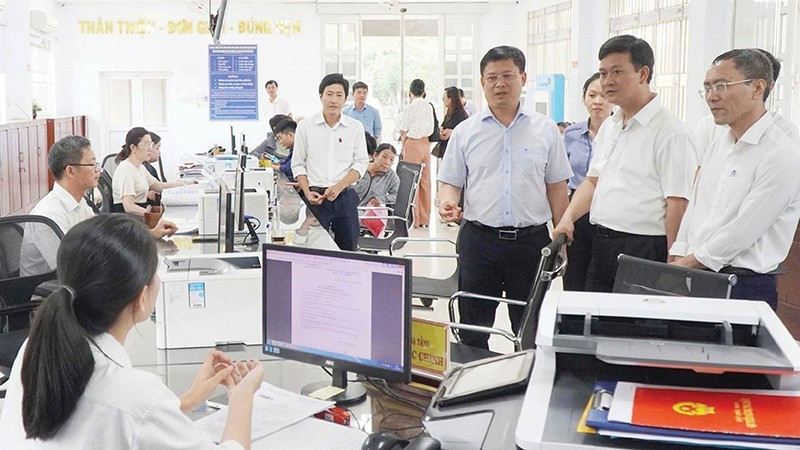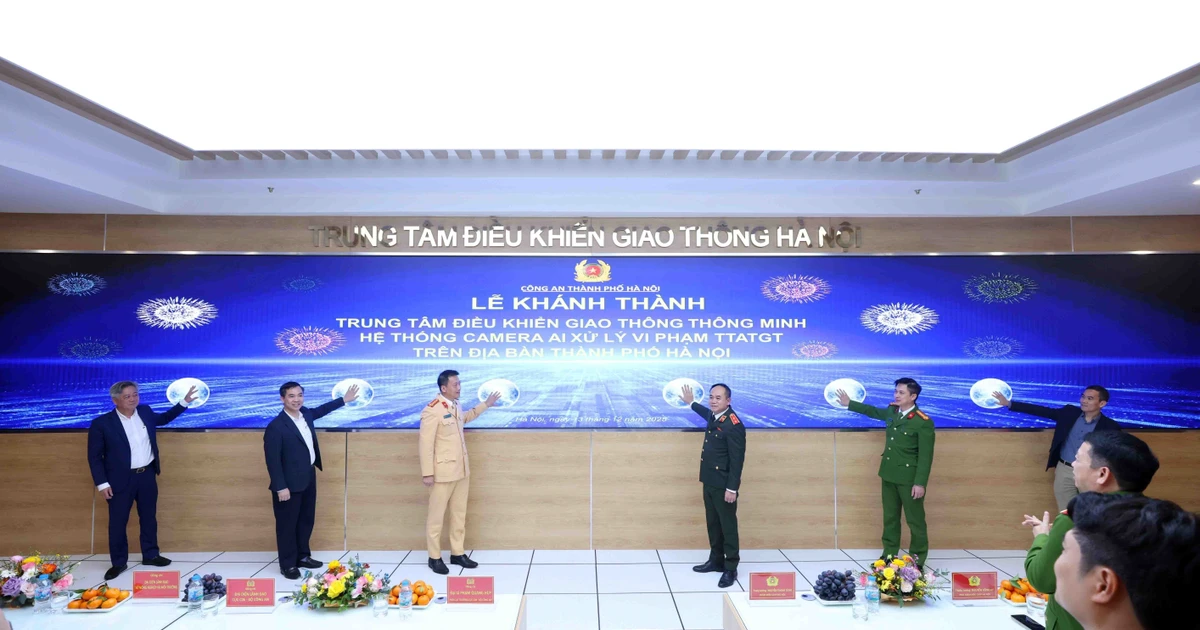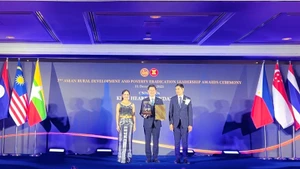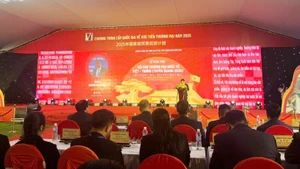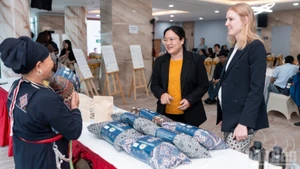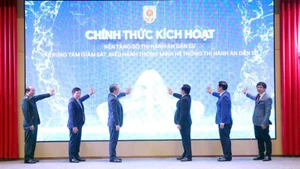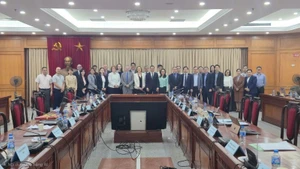Following the restructuring, Hue now has 40 new commune-level administrative units, including 21 wards and 19 communes. Among them, 20 wards and 19 communes were formed by merging adjacent units. The implementation of the two-tier local government model is expected to mark a significant shift in the role and governance capacity of grassroots authorities.
Smooth and efficient operations
On July 1, the first working day under the new model, hundreds of residents visited the Public Administrative Service Centre of Phu Xuan Ward (located at 394 Dinh Tien Hoang Street) to complete administrative procedures.
After collecting a number from the automated system, people wait to be called and are then guided in a friendly and thorough manner by staff. Currently, the Public Administrative Service Centre at Phu Xuan Ward features nearly 15 service counters covering various areas of public administration.
Many people expressed satisfaction with the quick, accurate, and courteous service. Pham Thanh, a resident of Phu Xuan Ward, said: “Since the restructuring and consolidation of the two-tier local government system, administrative procedures have become faster and less cumbersome. Previously, people had to make multiple trips to complete land records. A lack of standardisation and limited staff at the commune level used to delay the process. Now, with experienced personnel assigned from the former city and district levels to the wards and communes, things have improved significantly and procedures are handled much faster.”
Nguyen Viet Bang, Chairman of Phu Xuan Ward People’s Committee, stated that the ward had invested in developing its public administrative service centre to best serve residents. The software system is fully integrated, with adequate staffing and equipment, enabling immediate operation from the very first day.
According to Nguyen Xuan Son, Director of the Hue Department of Science and Technology, as of now, all technological infrastructure, including data centres, cloud computing systems, network transmission lines, and specialised equipment—has been fully deployed at 41 administrative service centres across 40 wards and communes in the city.
The administrative procedure software has been configured with over 1,000 procedures, fully integrated with the National Public Service Portal. It supports VNeID logins, digital signatures, synchronisation of application statuses, and online payments. The digital document archive allows for the reuse of prior information, greatly reducing the time and cost of completing procedures.
Son added that the city has issued 2,700 accounts to public servants for using digital platforms for documentation, reporting, online meetings, and management. Shared databases at city and ward levels are fully interconnected, allowing rapid information retrieval and administrative processing without being restricted by administrative boundaries.
In addition, the city has digitised 100% of all still-valid administrative procedure outcomes at the district level and handed them over to the wards and communes, ensuring data continuity and avoiding any loss of records.
Completing the public service model
Nguyen Van Manh, Director of the Hue Department of Home Affairs, said that in preparation for the official launch of the new administrative model on July 1, the city had meticulously planned the process.
The reorganisation of commune-level units was implemented systematically and synchronously, covering staffing, infrastructure, operational processes, IT system upgrades, and database integration.
Manh noted that each commune-level Public Administrative Service Centre is now a centralised unit for receiving and handling procedures, headed by the Vice Chairman of the ward/commune People’s Committee acting as Director. This model is both streamlined and professional, aligning more closely with local needs.
According to Tran Huu Thuy Giang, Chief of Office of the Hue People’s Committee, the city is actively rolling out a boundary-free administrative procedure model to serve citizens more efficiently in a digital environment.
Deputy Secretary of the City Party Committee and Chairman of the Hue People’s Committee, Nguyen Van Phuong, said the restructuring of administrative units and implementation of the two-tier local government system is a key policy to establish a leaner and more effective administration that better serves both citizens and businesses.
When ward- and commune-level administrative service centres operate efficiently, they help shorten processing times, increase transparency, and improve administrative responsiveness.
Phuong confirmed that the 40 commune-level administrative units officially began operations on July 1, replacing the district-level role. Hue now has over 50% of its units designated as wards, placing it among the leading cities nationwide. This means that commune-level governments will serve as the primary interface between citizens and administrative bodies.
“The ultimate goal of this administrative restructuring is to build a streamlined, modern, high-performing, and efficient government that better serves the needs of the public and businesses. To achieve this, continuity in state governance must be maintained, especially to ensure that the transfer of administrative functions does not disrupt public services or affect citizens’ rights,” Phuong affirmed.
